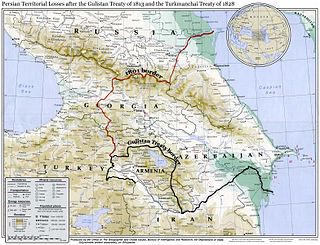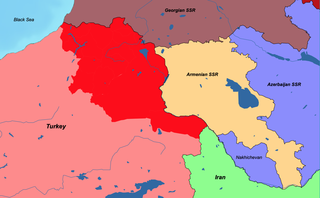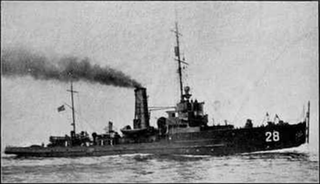Related Research Articles

The (Montreux) Convention regarding the Regime of the Straits, often known simply as the Montreux Convention, is an international agreement governing the Bosporus and Dardanelles Straits in Turkey. Signed on 20 July 1936 at the Montreux Palace in Switzerland, it went into effect on 9 November 1936, addressing the long running Straits Question over who should control the strategically vital link between the Black and Mediterranean seas.

The Republics of the Union of Soviet Socialist Republics or the Union Republics were national-based administrative units of the Union of Soviet Socialist Republics (USSR). The Soviet Union was formed in 1922 by a treaty between the Soviet republics of Byelorussia, Russian SFSR (RSFSR), Transcaucasian Federation, and Ukraine, by which they became its constituent republics of the Union of Soviet Socialist Republics.

The United Nations Convention on the Law of the Sea (UNCLOS), also called the Law of the Sea Convention or the Law of the Sea Treaty, is an international agreement that establishes a legal framework for all marine and maritime activities. As of May 2023, 168 countries and the European Union are parties.

The Azerbaijan Soviet Socialist Republic, also referred to as the Azerbaijani Soviet Socialist Republic, Azerbaijan SSR, Azerbaijani SSR, AzSSR, Soviet Azerbaijan or simply Azerbaijan, was one of the constituent republics of the Soviet Union between 1922 and 1991. Created on 28 April 1920 when the Russian Soviet Federative Socialist Republic brought pro-Soviet figures to power in the region, the first two years of the Azerbaijani SSR were as an independent country until incorporation into the Transcausasian SFSR, along with the Armenian SSR and the Georgian SSR.

Territorial waters are informally an area of water where a sovereign state has jurisdiction, including internal waters, the territorial sea, the contiguous zone, the exclusive economic zone, and potentially the extended continental shelf. In a narrower sense, the term is often used as a synonym for the territorial sea.

The Treaty of Gulistan was a peace treaty concluded between the Russian Empire and Qajar Iran on 24 October 1813 in the village of Gulistan as a result of the first full-scale Russo-Persian War. The peace negotiations were precipitated by the successful storming of Lankaran by General Pyotr Kotlyarevsky on 1 January 1813. It was the first of the series of treaties signed between Qajar Iran and Imperial Russia that forced Persia to cede the territories that formerly were part of Iran.

The Iranian Soviet Socialist Republic, also known as the Socialist Soviet Republic of Gilan, was a short-lived unrecognized state, a Soviet republic in north-west of Caspian sea that lasted from June 1920 until September 1921. It was established by Mirza Kuchik Khan, a leader of the "Constitutionalist Movement of Gilan", and his Jangali partisans, with the assistance of the Soviet Russia's Red Army.

The Treaty of Kars was a treaty that established the borders between Turkey and the three Transcaucasian republics of the Soviet Union, which are now the independent republics of Armenia, Georgia and Azerbaijan. The treaty was signed in the city of Kars on 13 October 1921.
The Russo-Persian Treaty of Friendship was signed on 26 February 1921 in Moscow between representatives of Persia and Soviet Russia. Based on the terms of the treaty, all previous agreements made between the signatories including the Treaty of Turkmenchay were canceled. Moreover, both Russia and Iran were given full and equal shipping rights in the Caspian Sea along with the right to fly their respective national flags on their commercial vessels. Ratifications were exchanged in Teheran on 26 February 1922. It was registered in League of Nations Treaty Series on 7 June 1922. The original purpose of the treaty was to prevent White Russian counter-revolutionary forces who fled to Iran after the Bolshevik Revolution from attacking the Soviets from Iranian territory as had happened as late as 1918. The passage of the treaty, and particularly articles 5 and 6, was subject to vigorous debate in the Persian parliament; anti-British sentiment, however, lead to its acceptance without alteration. The treaty would serve as the basis for a Soviet occupation in 1941, and articles 5 and 6 were eventually repudiated by Iran in 1979.
The Treaty of Commerce and Navigation was signed on March 25, 1940 between representatives of Iran and the Soviet Union. This accord helped to reinforce the tenets of the Treaty of Establishment, Commerce and Navigation. Based on the terms of the treaty, both signatories agreed to reinforce the 10-mile fishing limit for all commercial vessels in the Caspian Sea. Moreover, both signatories agreed that only Iranian and Russian commercial vessels were permitted to fish beyond the 10-mile nautical limit. The treaty did not include any clauses regarding the issue of seabed mining.

Relevant events began regarding the Baltic states and the Soviet Union when, following Bolshevist Russia's conflict with the Baltic states—Lithuania, Latvia and Estonia—several peace treaties were signed with Russia and its successor, the Soviet Union. In the late 1920s and early 1930s, the Soviet Union and all three Baltic States further signed non-aggression treaties. The Soviet Union also confirmed that it would adhere to the Kellogg–Briand Pact with regard to its neighbors, including Estonia and Latvia, and entered into a convention defining "aggression" that included all three Baltic countries.

Mauritania–Russia relations are the bilateral foreign relations between the Russian Federation and Mauritania.
The Lisbon Protocol to the 1991 Strategic Arms Reduction Treaty was a document signed by representatives of Russia, Belarus, Ukraine, and Kazakhstan that recognized the four states as successors of the Union of Soviet Socialist Republics and all of them assume obligations of the Soviet Union under the START I treaty. The protocol was signed in Lisbon, Portugal, on 23 May 1992.

Soviet Union–Turkey relations were the diplomatic relations between the Soviet Union and the Republic of Turkey.

The Declaration and Treaty on the Formation of the Union of Soviet Socialist Republics officially created the Union of Soviet Socialist Republics (USSR), commonly known as the Soviet Union. It de jure legalised a political union of several Soviet republics that had existed since 1919 and created a new federal government whose key functions were centralised in Moscow. Its legislative branch consisted of the Congress of Soviets of the Soviet Union and the Central Executive Committee of the Soviet Union (TsIK), while the Council of People's Commissars composed the executive.
The following lists events that happened during 1935 in the Union of Soviet Socialist Republics.
The Treaty of Peace between Finland and Germany, also called the Berlin Peace Treaty, signed in Berlin on 7 March 1918 ended the state of war that existed between Finland and the German Empire as a result of World War I. It paved the way for German intervention in the Finnish Civil War and the invasion of Åland.

Shahin, named Pahlavi from 1926 to 1935, was an Iranian naval gunboat sunk in the World War II. She was built in Germany as FM24 in 1917 and served in the German navy during World War I as a minesweeper.
The 4th Region or the Northern Fleet is the flotilla of the Islamic Republic of Iran Navy in the Caspian Sea.
References
- ↑ Mehdiyoun, p. 180. The legal regime regarding the Caspian remained unchanged until after the Russian Revolution of 1917. The 1921 Treaty of Friendship between Iran and Russia abrogated all prior treaties and restored Iranian shipping rights in the Caspian. Under the Treaty of Establishment, Commerce and Navigation concluded by the two states on August 25, 1935, each party "reserv[ed] to vessels flying its own flag the right to fish in its coastal waters up to a limit of ten nautical miles." They reaffirmed the 10-mile fishing zone in the Treaty of Commerce and Navigation of March 25, 1940. Beyond the 10-mile zone, fishing was allowed only to Soviet and Iranian nationals. The Treaty was silent on seabed mining.
- ↑ Mehdiyoun, p. 180. [Footnote] Treaty of Establishment, Commerce and Navigation, with Final Protocols and Annex, Aug. 25, 1935, Iran-USSR, Art. 15,176 LNTS 301,317. Article 14 stated: The Contracting Parties agree that, in conformity with the principles set forth in the Treaty of February 26th, 1921, between the Russian Socialist Federal Soviet Republic and Persia, there shall, throughout the area of the Caspian Sea, be only vessels belonging to the Union of Soviet Socialist Republics or to Iran and to nationals or commercial and transport organisations of one of the two Contracting Parties, flying the flag of the Union of Soviet Socialist Republics or that of Iran, respectively.